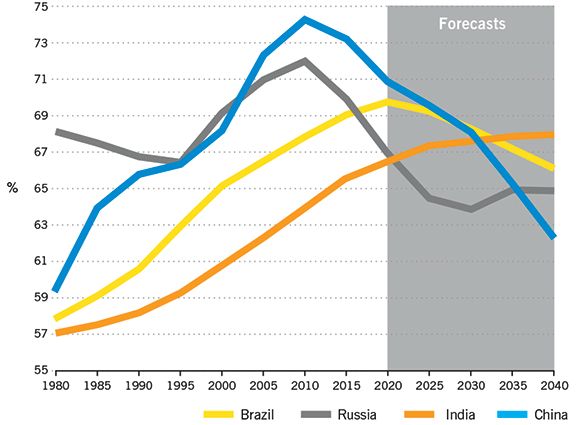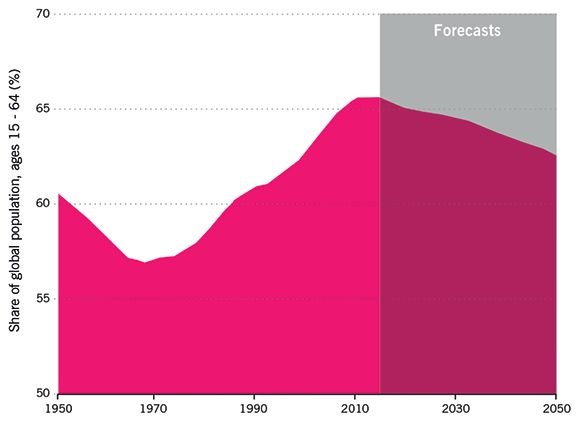The workshop of the world is running out of staff: China’s working-age population is falling
You might have heard about the Chinese birth rate rising as the one-child policy formally ends. The small rise, however, doesn’t dent the big picture—the Chinese are now getting on. That has less to do with any policy than the transformational rise in living standards over the decades. This raises life expectancy, and levels of education which, in turn, encourages proactive family planning. After the end of the ruinous Great Leap Forward in the early 1960s, there was a short-lived baby boom, but that demographic bulge is now working through the system, and tipping over into older age. The upshot? The Chinese prime-aged population (aged 15 to 59) has started shrinking: by 2050 all the growth since 1985 will have been reversed.

In workforce terms, the BRICs are sinking like stones: Other emerging economies are heading China’s way
The term “emerging economies” hopefully suggests that rising powers would take up the slack from a weary, ageing west. But two of the other much-vaunted BRICs are also headed China’s way. The fear is widespread among the so-called economies of tomorrow that they may get old before they get rich. The proportion of Russians of working age has been on the slide for several years now—partially a legacy of the disastrous 1990s, and in Brazil the same ratio is on the cusp of sinking too. Among the four BRICs only India looks set to retain growth boosting demographics, and even there the pace of the expansion of the working-age population share is levelling off.

Older, everywhere: Factor in the west, and the slide is really stark
Parts of the world are holding out, notably in sub-Saharan Africa and the wider Middle East, but the global picture now looks very different to even a few years ago. The ageing populations of the advanced economies and the larger emerging ones combines with past falls in the birth rate to mean that the share of total world population who are of prime working age has been falling since 2012. After a four-decade rise, the trend has reversed with that fall projected to last throughout the 2020s, 2030s and 2040s. A slower-growing global workforce will be a big challenge for the global economy.













